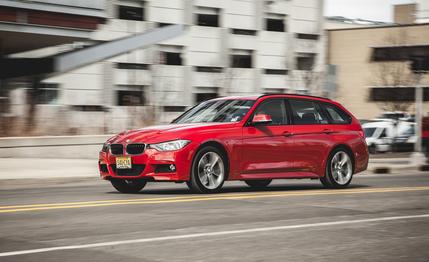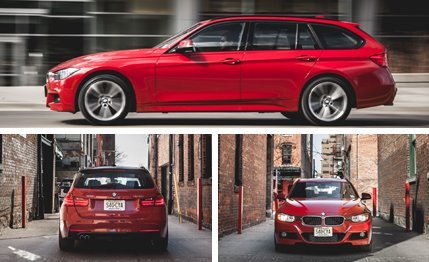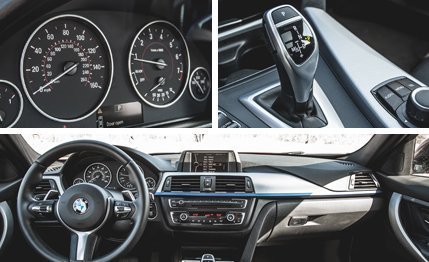
 Instrumented Test
Instrumented Test
When BMW stopped selling the hatchback ti model in the U.S. in 1999, there were no apologies made. “Americans do not like hatchbacks,” said the Germans, in the same way they might profess their own people’s love of rye bread. Then came the contradiction: BMW immediately brought the 3-series wagon to our shores for the first time. Isn’t a wagon a hatchback? Of course it is. And, of course, Americans do not dislike hatchbacks any more than we dislike dark bread. White might be the bestseller, but once a taste for something more develops, it’s hard to give up. Which is presumably why BMW continues to offer a 3-series wagon here.
Two generations on, the 328i xDrive is one of two “sport wagon” variants, the other being a diesel that substitutes a “d” for the “i” in the otherwise meaningless alphanumeric name. The gasoline and diesel engines are both turbocharged, 2.0-liter four-cylinders, and regardless of which one is powering your 3-series wagon, you will get an eight-speed automatic transmission and all-wheel drive. No more manual or rear drive, nor can you get a six-cylinder wagon anymore.


At least these omissions are not magnified by other specious disadvantages compared with the sedan, as borne out by our testing. The same 240-hp, gas-powered four (making 255 lb-ft of torque) propels the 328i xDrive wagon through the quarter-mile in 14.3 seconds, just 0.1 second behind the last 328i sedan we clocked, that one a rear-driver. Chalk this up to the wagon’s 3800-pound curb weight, which is 315 more than the sedan’s, according to our scales. As would be expected, the wagon body shifts weight distribution a bit, from 50.4 percent over the rear axle of the sedan to 51.7 percent here. The slalom speed drops by six-tenths of a mile per hour, but the wagon drives nearly identically to the sedan.
With the optional adjustable suspension left in its default Comfort mode, there’s still too much fore-and-aft motion and body roll for our notion of what constitutes a BMW. The chassis is capable of more, which is why the 3-series starting ritual must now include punching it into Sport mode before setting off, even in the heavier wagon and even topped with a full load. Thusly programmed, the wagon reminds us at every corner why we prefer it over the longer-wheelbase 3-series Gran Turismo or the more commodious but taller X1. Their hatches make that pair of 3-series sisters similarly utilitarian, but neither can match the low and nimble feel of this aptly named sport wagon.


In other dynamic measures, the wagon performed close enough to the sedan that there’s little sacrifice in giving up the enclosed 13-cubic-foot trunk for the 18-cubic-foot cargo hold. The rear glass on the wagon even opens separately from the hatch itself, a feature that is as neat as it is rare.
BMW’s $2150 premium over the already steep price of the 328i xDrive sedan puts the wagon’s starting price at $42,375. And you will certainly pay more than that, because BMW is as stingy with the standard equipment here as it is throughout its lineup. But you can get into a hatchback BMW for far less, as the 3-series-derived X1 xDrive28i starts at $33,525. No wonder then, that BMW is selling 13 times as many X1s as it is 3-series wagons. In fact, based largely on the popularity of its crossovers, 43 percent of the 72,000 BMWs sold in the U.S. through the first quarter of 2014 have had hatches. Please pass the rye bread.